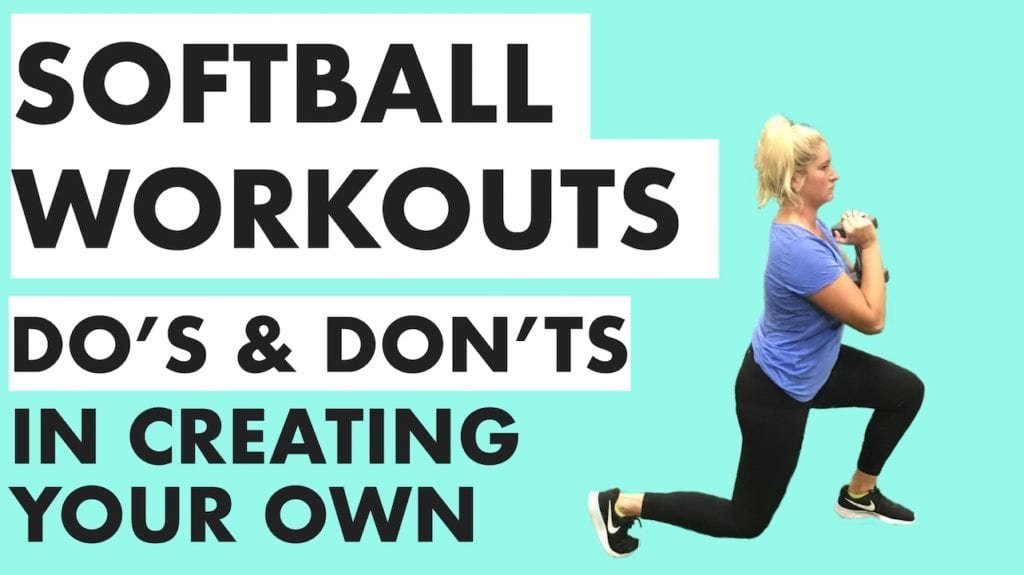*This article may contain product links which pay me a small commission if you make a purchase. Learn more.
In softball, your workout plan can make the difference between reaching the collegiate level or not. Yet, workouts for fastpitch often are created without consideration of the glutes, hamstrings, grip and lateral hips, all of which are critical for softball players. Learn do’s and don’ts in making your own fastpitch softball workouts.
Designing Effective Softball Workout Programs
This takes practice, experience and some know-how. The smash-n-grab method of plucking anything you can find from the internet…it probably won’t work as well as you hope, though admittedly anything is usually better than nothing.
Please note: there are affiliate links to equipment in this article. An “affiliate link” means that if you buy a product through a link, I may receive a small commission at no additional cost to you. I only recommend products I use and love.
The keys to a good softball workout program are the following:
- Balance
- Both in muscles used and exercise types
- Correct amount of volume
- Not too much or too little
- Safety of exercises
- The goal is that the risk v reward of an exercise is always HEAVILY on the reward side, with the maximum benefit with the least amount of risk.
- Sport-Specificity
- 80% of any athlete’s program will be mostly the same.
- The last 20% is what separates the goals of one sport from the other.
- [Female] Athlete Specific
- Women shouldn’t be treated differently than men – they are certainly capable of training the same way and using the same exercises.
- Yet, women have some needs different from those of men, so prioritizing upper body strength, lateral hip strength (knee injury prevention), grip strength and hamstrings is important.
- The exercises don’t change based on gender, but dosage does.
Okay! On to Do’s and Don’ts!
I’m grouping these together for convenience but all four Do & Don’t pairs are equally important.
#1: Protecting the Knees
DO: Protect the Knees By Making Lateral Hip Strength a Priority
The lateral hip muscles and glutes help control the knee. ACL injures are 10x more prevalent in women than in men because of the “Q Angle” made between the hip and knee.
This just means that women are more likely to have their knees cave in (called valgus collapse) when they change direction, slip or land from a jump.
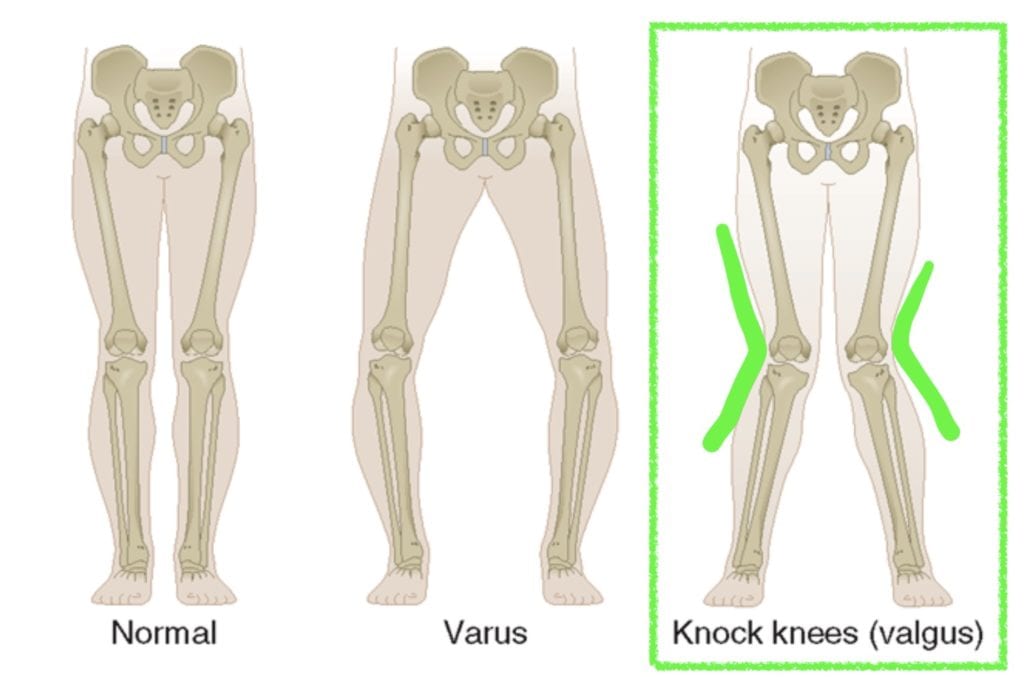
Stronger lateral hip muscles help control the knee, and the stronger they are the better they can help stop the knee from caving.
DON’T: Overload the Knees
Most programs include lots and lots of quad-dominant exercises. This is mostly because they’re easy and well-known (squats and lunges and all their variations).
Though these are good choices, they tend to strengthen the quads more than the glutes and hamstrings (though they do strengthen all leg muscles) and tend to be harder on the knees, especially in young athletes who still are growing.
Good Choices For The Legs That Are Knee-Friendly
Knee-Friendly Exercise #1 – The Mini Band Monster Walk
This exercise requires 12″ mini bands. They’re cheap! If you don’t have a set, I highly recommend them.
Grab a set here on Amazon for only about $10.
Knee-Friendly Exercise #2 – The Barbell Hip Thrust
This is THE best exercise for stronger glutes (butt), which are the main muscle involved in improving sprint speed.
Knee-Friendly Exercise #3: Sliding Leg Curls
Grab a cheap set of sliders that are perfect for these leg curls. You can do them anywhere!
Sliders for sliding leg curls are found on Amazon here.
#2 Building Upper Body Strength
Upper body strength is HUGE for fastpitch players. Because they lag a bit behind their male baseball counterparts in natural testosterone production, women need more time on upper body exercises to produce the amount of power and batspeed that they want.
DO: Spend lots of time on the Push Up
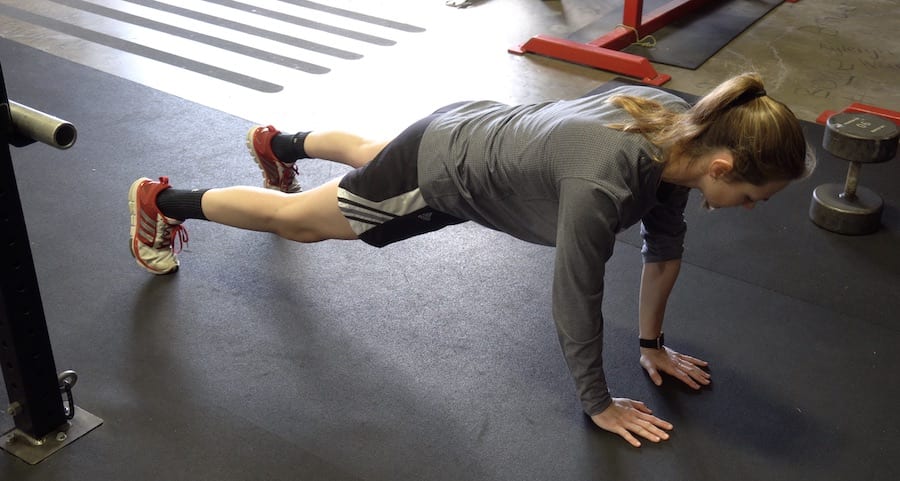
The Push up is foundational and more of a whole-body exercise than you might think. Yes, you’re just pushing the body away from the ground with the arms. However, for every second you’re doing a push up, you’re also doing a plank, stabilizing your shoulders and maintaining good spinal posture.
DON’T: Jump to bench press variations too soon
NO player should bother with bench press variations until they are capable of doing at least 10 *good push ups from the floor.
This is just a classic example of putting the cart before the horse. The push up is safer, engages more of the core and whole body and forces the shoulder blades to move in a rhythmic way while stabilizing the shoulder.
Basically, the push up is good arm care and a potential throwing velocity improver as well. Master it first, then move on to other pushing exercises.
Good Choices for Building Upper Body Strength in Softball Players
The Bar Push Up: Great for those who can’t do full push ups (yet!)
The Blast Strap Push Up: Good For More Advanced Players, great for shoulder stability.
We made our own “blast straps” at my academy, but you can buy them relatively inexpensively. They’re great for rows, push ups, and lots else.
Grab my favorite suspension trainer (called the Human Trainer) on Amazon here.
#3 Utilizing The King of Upper Body Exercises: The Chin Up
Push ups are fantastic, and their counterpart is the chin up, which is without a doubt the best upper-body strength builder for not just softball players, but any person.
DO: Use Band-Assisted Chin Ups
Chin ups without assistances are VERY hard for female athletes, but performing one is an attainable longterm goal. They should be a part of every female athlete’s training regimen, and using bands is a good way to provide accommodating resistance that allows full range of motion while the athlete gets stronger.
The bands shown in the photo below are 41″ long, very durable and not overly expensive–something that can be pack in a gym bag and used in any gym.
Check out chin up bands here on Amazon. There’s also a full equipment list at the bottom of this post.
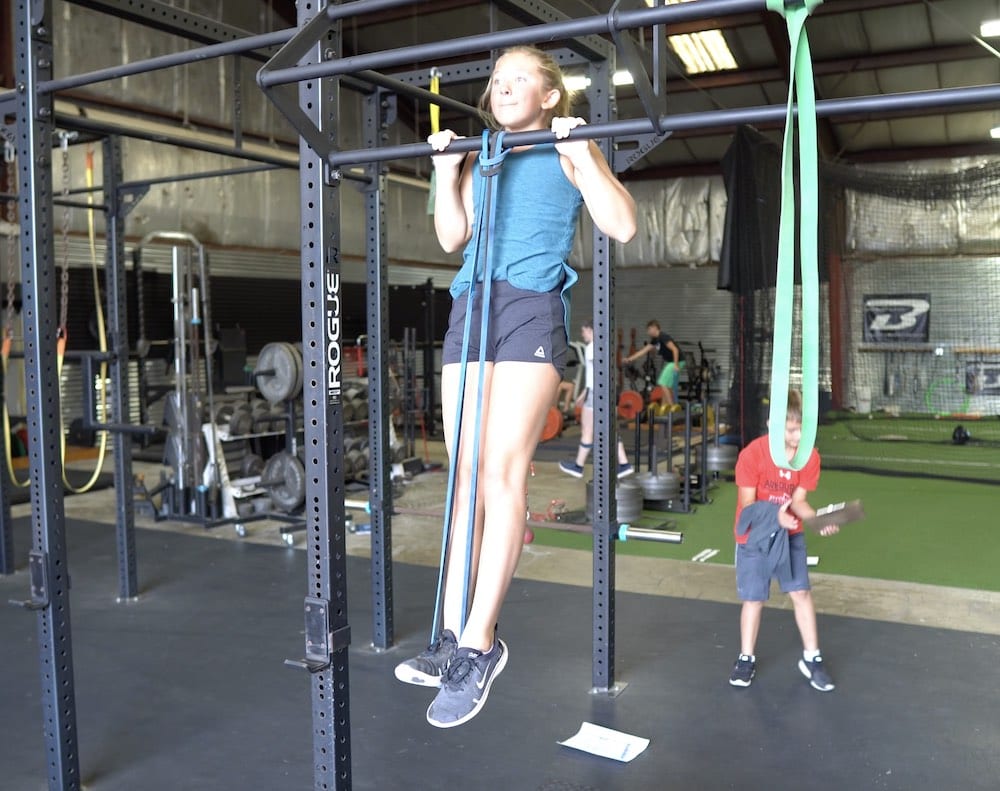
Chin ups are just fundamentally different–better–than lat pull down. They’re incredibly difficult both physically and mentally (builds toughness!), and build the arms, back, forearms, core and mind.
DON’T: Settle for Lat Pull Down
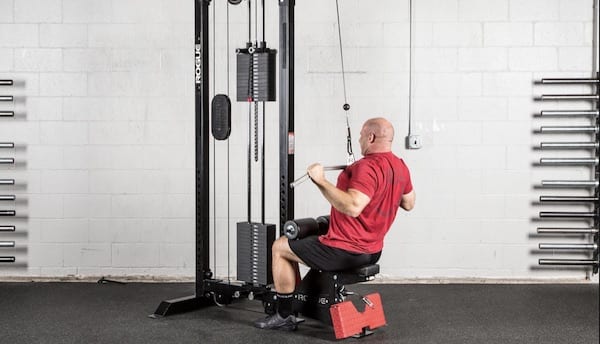
Lat pull downs definitely have their place, but I don’t think it’s for athletes trying to build up their whole body strength. With busy schedules and limited time, it’ll just take longer to get a softball player as strong as she wants.
#4 Ensure Consistent Progress & Gains
Any program is only as good as the work ethic of the athlete and the coaching she receives. Don’t overlook my final two do’s and don’ts!
DO: Monitor Weight Progress
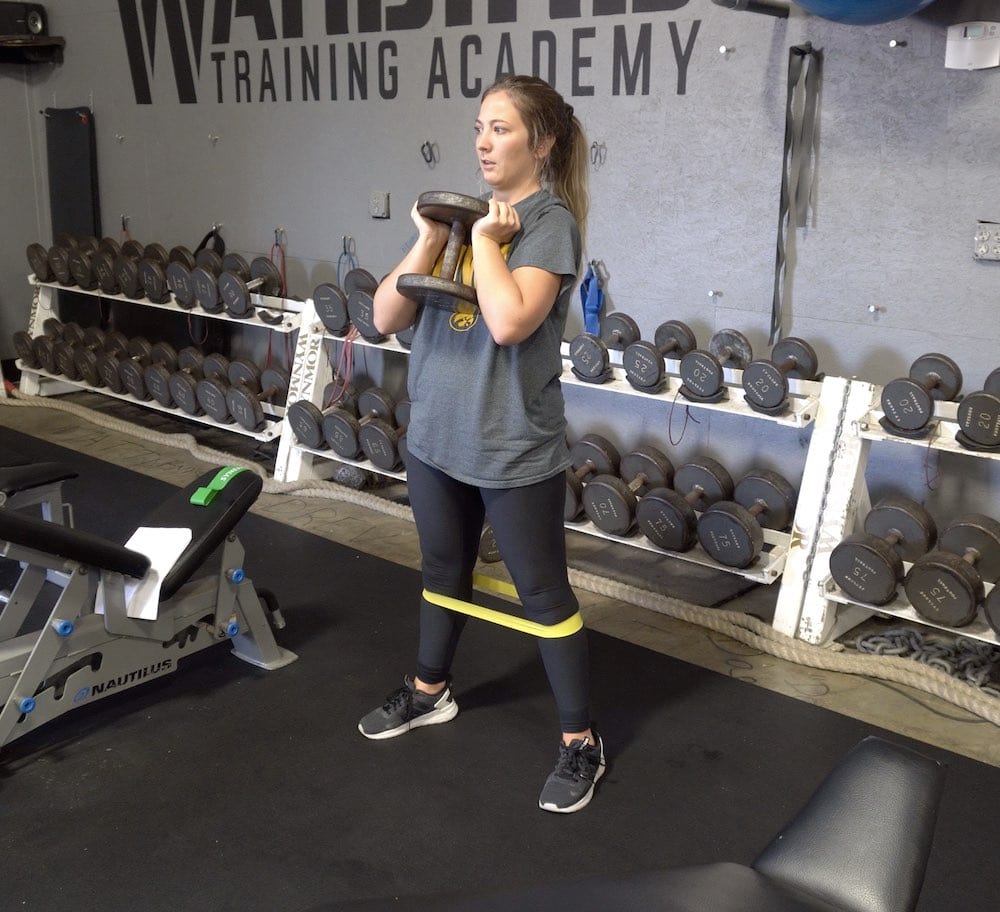
Too many athletes won’t push themselves to add weight on a regular basis–it’s a learned behavior.
As a coach, it’s your job to supervise and remind athletes and watch them and tell them when it looks like it’s time to add a few pounds to the bar.
If my 10 years as a strength coach has taught me anything, it’s that unless you constantly encourage them to add weight…most never will.
DON’T: Let Players Train Unsupervised
Too many high school programs mandate that their players perform the school’s strength program with the team. This is great…until no one actually supervises the program.
If you’re a parent or coach, you have two options:
- Supervise and coach yourself (IF you’re qualified)
- Hire someone who will.
If neither option will work for you, then prepare for the players on the program either to get poor, time-wasting results or get hurt. Or both.
Equipment List From This Article
- Mini Bands for hip Exercises: Go here
- Sliders for sliding leg curls: Go here.
- Suspension Trainer for Rows & Push Ups: Go Here.
- Chin Up Bands: Go here.
Don’t Want to Build a Workout Yourself? Train with Me, Online👇
If you don’t want to go to the trouble of putting together an effective workout for your daughter or team, don’t worry–I have a great training option for players who have some training under the belt but are ready for something better.
